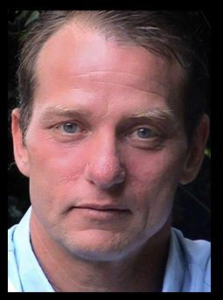12 October - 3 November 2020
Course Description
Offshore Wind Economics for Complete Beginners: An Introduction in Excel
Part 1
Facilitators: Gavin Smart & Ken Kasriel
Date: Monday 12 October
6:00pm – 8:00pm
Part 2
Facilitators: Gavin Smart & Ken Kasriel
Date: Wednesday 21 October
6:00pm – 8:00pm
Part 3
Facilitators: Gavin Smart & Ken Kasriel
Date: Tuesday 27 October
6:00pm – 8:00pm
Part 4
Facilitators: Gavin Smart, Ken Kasriel
Guest speaker: Hamish Wilson | BluEnergy – Talk/Q&A on careers management in the energy transition
Date: Tuesday 3 November
6:00pm – 8:00pm
What you will learn
This is a simplified but realistic, hands-on, Excel case study-based tour of basic offshore wind energy economics, for numerate students who know nothing about wind and little if anything about project economic modelling.
Starting from zero, you will be equipped, via lectures, calculation demonstrations, and optional (non-graded) exercises, to make an investment decision amongst competing offshore windfarm project options. The premise is that your development company has won a license to develop a wind farm within an area off the coast of semi-scenic Bubbah’s Vineyard.
You’re already busy examining which would generate more net present value at your chosen site — a smaller number of big wind turbines, or a bigger number of smaller ones — when concerned local stakeholders object to your consent application, leaving you with two choices. Either:
- agree to move the project further from shore, because as planned, it would spoil the beach view and hit the tourism-based economy; or
- prepare for a legal challenge to force you to do so, which even if you win, could delay the project by a year or two easily.
So your options are:
1. take full account of local concerns, and build further offshore; or await the lawsuit’s outcome, which will be either that:
2a. you may only build the Far project, or
2b. you may build either the Far or originally-intended Near project.
To maximize value, which location? Which turbine model? When? The answers aren’t obvious.
On the one hand, your preferred site is closer in, in shallower water, and so cheaper to build than further out, where the continental shelf starts to slope. On the other hand, further out, the higher average windspeed would mean more power production.
Then there’s the toll which a delay could take on the project’s net present value to consider, as well as your estimate of the chances of the lawsuit ending either way.
The course assumes no wind background or economics modelling experience, and walks you through building a suitably-simplified but instructive Excel model, designed to handle these very questions.
The cases draw on insightfully granular technical and cost case assumptions, prepared by co-presenter Gavin Smart, a wind project economist with 10 years renewables experience, including offshore wind investment analysis for ScottishPower Renewables, and with numerous papers, including the lead authorship of an International Energy Agency offshore wind study. He is now the economics and finance lead at Offshore Renewable Energy Catapult, a globally recognised technology innovation and research centre.
They were co-designed by Ken Kasriel, a petroleum economist with 25 years experience, author of a newby-friendly upstream petroleum valuation modelling textbook adopted at over 20 US institutions, and giver of newby-friendly MSc. and private economics and decision-making courses.
The course, which also looks at underlying wind resource and generation estimation, features problems to be solved / selected rows of a model to be filled in between classes, with answers supplied for self-checking, and discussed in class. These are not mandatory but recommended, as hands-on is the best way to learn modelling.
Although the course is wind-focussed, aspects of the modelling approach will be useful in other industries, such as upstream petroleum.
We will be joined on the last evening, for a talk / Q&A on careers management in the energy transition, with Hamish Wilson, an accomplished professional in both petroleum exploration and renewables, now co-founder of BluEnergy, a low carbon energy consultancy.
Prerequisites
Students need Microsoft Excel, comfort with how dollar signs are used in formulas, and a basic understanding of Monte Carlo simulation and probability density functions.
Course Content
Getting electricity from wind – basic calculations
- How wind turbine blade area, wind speed, physical limits and other factors impact generation capacity
- Estimating wind speed from empirical wind data, including adjustments for turbine height and temperature
- How not to use average wind speeds
- How to use average wind speeds: create a wind speed distribution using a probability function, via a cheap-and-cheerful Monte Carlo simulation in Excel (no programming skills or additional software needed)
- Introducing wind turbine “power curves”, which plot generation capacity for different wind speeds
- Combining wind speed distributions with power curves to calculate annual electricity production and a turbine’s “capacity factor” (a measure not unlike refinery utilisation).
- Exercise: given the choice of different locations and wind turbine models, find the combination which maximizes generation
Project economic basics (note: some of these topics are applicable to petroleum / general economics)
- Calculating time from investment to payback, and why it’s only so meaningful; Maximum Exposure
- Net Present Value (NPV): review of the intuition behind why we discount; a much better alternative to Excel’s NPV function; quantifying the value impact of project delays
- Internal Rate of Return: NPV’s problematic twin
- The mid-year convention for inflation and discounting
- Levelized Cost of Energy: finding the NPV-breakeven power tariff; what it does and doesn’t tell you
- Modelling a plain vanilla income tax regime with depreciation and loss-carry forwards
- Sensitivity analysis: what are the key factors influencing project NPV?
Case study
- Greenfield wind farm project stages
- Gross and net power production: the role of losses from “wind wakes”, downtime, blade erosion, electrical losses
- Fixed (Power Purchase Agreement) versus market electricity tariffs (simplistic view due to time constraints)
- A granular look at offshore wind cost items, based on real examples: turbines, foundations, cables and other transmission hardware; components of operations and maintenance costs
- Cost classification for tax purposes
- Using variance analysis to understand the trade-offs, and finding the optimal concept among, project concept permutations, e.g. distance from shore; many small vs. fewer large turbines; act now or wait.
- Framing results of various cases / incorporating risk by assembling scenario outcomes into a simple decision tree
Excel techniques braided in as we go
- Why and how to build a multi-case model
- Sensitivity multipliers and switches
- Data Tables for analysis and guerrilla Monte Carlo simulation
- Named Excel cells and ranges: uses and pitfalls
- The vital importance of checksum cells and error alarms
- Simple macros which make using audit functions second nature
Participants receive all versions of the Excel question and answer files.
Recommended further resources
These are not needed for the course, but will give the curious a good starting point for broader and deeper exploration of wind/renewables, including technologies used in offshore wind resource assessment, windfarm construction, monitoring and maintenance; the special challenges of floating offshore wind, and of incorporating wind and other renewables into the grid.
Who should attend
Lateral-thinking or merely curious energy professionals seeking a hands-on, modelling skills-enhancing introduction to offshore wind energy — a major focus of industry and investor interest these days — through an economic/commercial lens.
To access member-only events or to benefit from the reduced member fees please visit https://www.ges-gb.org.uk/membership/ to find out how to become a PESGB member.
This course will go ahead regardless of the number of attendees.
Speaker Biography - Gavin Smart

Gavin Smart has 10 years of wide-ranging experience in financial analysis and economic modelling of offshore renewables, spanning project appraisal, business planning, budgeting and financial management.
A qualified Management Accountant (ACMA, CGMA), Gavin held a number of traditional finance roles before moving into valuation and business modelling with Ernst & Young in the Middle East, working across a range of industries and delivering valuation modelling training to EY graduates.
He moved into offshore renewables in 2010 as a senior valuation modeller with ScottishPower Renewables, where he was part of cross-disciplinary teams working on UK and European offshore wind and marine energy projects, compiling the business cases and multiple scenario analyses for Board-level review of projects including East Anglia One, Wikinger and St Brieuc and bringing the West of Duddon Sands project to successful Final Investment Decision (FID).
Gavin joined the Offshore Renewable Energy (ORE) Catapult, the UK’s leading technology innovation and research centre for offshore renewable energy, in 2014, where is currently Head of Analysis & Insights. He leads a team of financial and strategy analysts and is responsible for developing and maintaining financial and economic modelling, which feeds directly into the organisation’s commercial strategy and for generating insights from ORE Catapult projects.
He has led a number of high-profile, industry-level projects, including: lead author on the International Energy Agency’s IEAWind Programme Task 26 “Offshore Wind Farm Baseline” report, 2016; “Macroeconomic Benefits of Floating Offshore Wind in the UK”, 2018; co-author on “Tidal Stream and Wave Energy Cost Reduction & Industrial Benefit”, 2018; and led quantitative analysis workstream of the Offshore Wind Cost Reduction Monitoring Framework (CRMF) 2014-2017.
Gavin and his team also work with a number of innovative companies helping to quantify the benefits of their products and services, and identifying pathways to commercialisation.
In addition to conducting and documenting detailed and complex analysis, Gavin regularly presents project findings and industry thought leadership at various offshore renewables conferences, including Global Offshore Wind, Wind Energy Hamburg, Reuters Offshore & Floating Wind Europe.
Speaker Biography - Ken Kasriel

Ken Kasriel is an independent petroleum economist and Associate Principal Economist with ERCE Energy in London. His 25-year career in petroleum finance also includes working in oil and gas equities research (including at Robert Flemings, now part of JP Morgan), as Senior Analyst with PwC’s global petroleum practice, and Senior Economist with RPS Energy.
He has built upstream economic models in 26 fiscal regimes in Africa, Asia, Europe, the Former Soviet Union, the Middle East and the Americas, for the purposes of valuation, fiscal/legal due diligence, investment screening, portfolio optimization, negotiation, commercial arbitration and regulatory reporting. Mid-case resources involved have ranged from a few million to over a billion barrels of oil equivalent, from pre-drill exploration scoping through to brownfield development option valuation.
He has co-authored papers presented to the Society of Petroleum Engineers/published in The Oil & Gas Journal, as well as the textbook, Upstream Petroleum Fiscal and Valuation Modeling in Excel: a Worked Examples Approach, which student bookstore sales data indicate has been adopted by 21 US universities and colleges since its publication in 2013 by Wiley Finance. Editorial and Amazon reviews give it good marks for accessibility / laymen-friendliness.
He teaches a short course in petroleum economics and risk analysis to non-economist Petroleum Geoscience MSc students at University of London, Royal Holloway. He has also taught upstream valuation modelling at the French Institute of Petroleum (IFP School); privately trained new oil and gas company and investment banking staff before starting their first economic modelling roles; and built courseware used in training petroleum law students, simulating PSC contract negotiations among governments and international/national oil companies.
Originally a journalist (including a role as a multi-sector business editor of a business magazine published by the Economist Group), he likes intellectual grazing, learning and explaining. He started studying renewables in January 2020, via books and online courses (earning a 91% grade in The Technical of University of Denmark’s more engineering-focussed “Wind Energy” MOOC) and finds wind economics and technology fascinating.
Speaker Biography - Hamish Wilson

Hamish Wilson‘s career spans both the oil industry and renewables and includes leading technology and consultancy companies from start-up through to trade sale. He has consulted at senior executive level for a number of the world’s largest oil companies on exploration strategy and performance. The insights he gained from advising on oil company capital allocation processes, combined with a deep understanding of renewable energy risk and reward profiles, gives him a unique perspective on how to succeed in the transition to a low carbon future.
He’s teamed up with Bill Senior, Martin Dru, Sarah Milne and Tony Smith to form BluEnergy, a consultancy focused on helping oil companies with the Energy Transition.
Oil and gas companies are facing an existential crisis and the industry is in danger of losing its legitimacy. The Covid crisis has given the industry a glimpse into the future – how a world deep in energy transition might look like. Oil & gas companies fighting for survival with cash flow, investor returns, supply chain, and the fundamental value proposition under threat with a highly volatile earnings stream and borrowing base. By contrast, companies with high proportions of renewable energy in their portfolio, such as Iberdrola and Orsted, not only suffered less during the recent market crash, but quickly rebounded to pre-Covid levels
Change is mandated by the current economic and social upheaval that will result in sustained periods of low oil price. This will place pressure on the traditional oil company business models and investment options; broadening into alternative energy opportunities will diversify risk while maintaining returns.
In this context, BluEnergy can advise on how to package renewable energy investment options to fit in which oil company capital allocation processes and be consistent with an oil company skill set. Hamish believes the oil industry can lead the energy transition through its strengths in capital deployment and large-scale project delivery.
Venue Information
Venue information
Venue name:
Online
Venue address:
This event will be delivered online.



